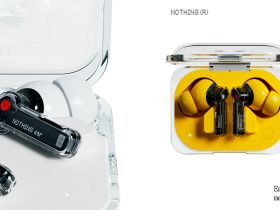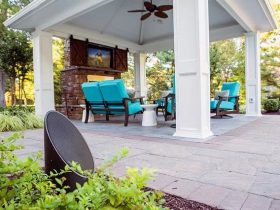There’s an old industry joke that says if you are a top seller of Sonos, you may not be that good of a retailer! How can you not be a good retailer when you are selling so many speakers and how can that even be funny? Call it ‘industry humour’. Sonos is one of the easiest powered speakers to sell and for good reason; they are fast to set up, they create a simple whole-home listening experience, they sound pretty good, and the company has done an exceptional job at branding and creating awareness.

That results in customers coming into your shop and asking for the product by name and viola, an easy sell!! What retailer doesn’t want a quick way for the cash register to sing with close to no effort? And that’s the inside joke; while Sonos may be a perfect speaker for some it is not necessarily the perfect speaker for all and if you sell a ton of Sonos speakers, chances are you could be leaving what might be a better or at least more interesting option on the table for your customer.

At one time I was one of those retailers; Sonos Play 5s and Play 1s went out the door with little effort. But when a customer was just sniffing at Sonos and not committed, I used the opportunity to do a comparison of Sonos against other wireless powered speakers; say a Devialet Phantom Gold (no comparison and 10x the price) or a high-end iFa or Naim Streamer. It’s like sitting in Business Class; once you have experienced something better, it’s often hard to go back to a mass market appeal product.

Let me back up for a minute. This is not a Sonos-bashing story. Sonos has arguably done more for making whole-home audio attainable than any other speaker brand on the planet and every competitor from ultra-high end to mid-range alternatives owes a debt of appreciation to Sonos for mapping the way to affordable multi-room audio.

Sonos is a perfectly acceptable option for many people. Honda and Kia automobiles are also perfectly acceptable vehicles too – they are safe, reliable and get you from point a-to-b without much emotion. But there’s always that customer who wants something a bit more unique or exotic. The same customer that will only buy a bike that ends in a vowel, who doesn’t want to have exactly what everyone else has, which is what Sonos has become.

When I closed my shop, I took the remainder of my Sonos inventory and incorporated it into my home audio system. When we lived in a small townhouse, where sound could never be too loud, having a bunch of speakers around the place worked well. But when we moved to a larger house in the mountains with 18’ high ceilings and where my closest neighbor is three football fields away, cranking Sonos was just not providing that goose bump emotion that comes from a more detailed system. I was also finding the Sonos app to be laggy and the Sonos Connect’s, attached to my two-channel system, were not always in synch with the Play 5s and 3s. My Sonos set up was no longer rewarding. Some of you may be thinking, well why not just add more speakers? That’s another industry trick to make something better. Just add more!!

While I have known and reported about Bluesound for at least a decade, like most consumers, even when you know it has a higher resolution streaming capability, higher amplification, and more sophisticated industrial design, it’s still hard moving from one platform to the next when you have already invested in the first. Try getting an Apple iPhone user to switch to Android, or a Canon camera user to switch to Nikon – it’s rare that people ever switch since you have already invested so much money and knowledge becoming familiar with what you have.
My new year’s resolution was to not keep something that is no longer giving me maximum pleasure, so I boxed up all my Sonos speakers and made the upgrade to Bluesound. I am three weeks in with the new system. Here are my observations so far:
OK, so why Bluesound? (Click here for a story on how Bluesound came to life)
Simply put: best in class streaming resolution with the lowest compression capabilities, beautiful industrial design cosmetics with touch screen glass surfaces with sensors that light up when they detect motion, and knowing Bluesound comes with an audiophile pedigree that shares the same parent company with NAD and PSB speakers; two powerhouse names in the world of high-end audio. I know that Bluesound is a serious name in audio. I have also noticed for many years that many high-end audio manufactures connect a Bluesound Node for streaming capabilities when they are displaying their speakers and amps at audio shows, so Bluesound already has an established reputation within the world of high-end audio. Oh … it’s also Canadian!
My Sonos hardware is a few years old and reliability issues were starting to emerge. Given the opportunity to replace existing Sonos speakers with new Sonos speakers or go with a brand new system altogether, I chose the latter.

What I replaced:
In my home system I had two Sonos Connects attached to two 2-channel systems in my house, (one on each level), two Play 5 powered speakers and three smaller Play 1 powered speakers. The total cost of the Sonos speakers was around $3,500. For the apples-to-apples swap, I added two Bluesound Nodes to replace the Sonos Connects, three Pulse M powered speakers that replaced the Sonos Play 1s, a Pulse M powered speaker and a Pulse 2i that replaced the larger Sonos Play 5s. The cost of the replacement Bluesound system was around $3,950, so pretty close. The cost would have been slightly lower with the Bluesound setup had I opted for two Pulse Mini’s that are the closest speaker in size to a Sonos Play 5 but I opted for the larger Pulse 2i and a single Pulse Mini. Although Bluesound is usually reviewed as a high-end alternative to Sonos, the systems are priced similarly. What an Instagram video of the set up here.
Setting things up:
Bluesound is an app-based streaming platform and the first line of business in any setup is downloading the BlueOS app. The app is available both for Apple and Android. Once the app was downloaded, I then plugged in my new Bluesound speakers one at a time. The app immediately found the speaker by model and asked if I wanted the speaker added to my WIFI network. Pop in the home WIFI password in the prompt and my first Pulse M was ready to play music from out-of-the-box and onto my counter in a matter of minutes. I then repeated the process for all speakers (two needed a software upgrade that added a few minutes to the set-up time).
Each speaker can be renamed based on their location and mine now have names like Kitchen, Livingroom, Hallway and Lower Level. Coming from a Sonos environment, setting up Bluesound was instantly familiar.


One trick I discovered is that naming the speaker and adjusting the sound signature is easier to do before you group your speakers together.
With the speakers all in place, renamed and tweaked for treble and bass, I grouped them all together for a whole home streaming experience. Each speaker’s volume can either be changed by controlling the volume on each speaker individually or by changing the volume as a group.
Three weeks later…
There’s an old saying that “buyers are liars” meaning you can convince yourself that anything is better since you just bought something new! I have deliberately waited to write up my thoughts so that I’d have enough time to get familiar with the Bluesound system in my new environment and recognize the sound. One big adjustment is that Sonos keeps you in the Sonos app when streaming, whereas Bluesound defaults to the streaming native app be it Tidal, Apple Music or Spotify. My preference is to use native apps anyway so this was actually a plus for me. Sonos lately has been pushing Sonos Radio as the default when searching music, so being able to open Tidal or Spotify natively without a default that I’m not interested in, is a plus.
On a speaker-to-speaker comparison I used Spotify Connect and toggled back and forth between a Sonos Play 1 and the Bluesound Pulse M. Spotify is the most popular and widely used streaming service in the world and most likely the app music listeners use most. The Pulse M, a DSP Smart Amplifier, just sounds bigger. Bigger, more spatial sound with greater clarity. The Pulse M produces 80 watts (50X x 1 woofer and two 15W tweeters). Now remember, this may not be a fair comparison since the Play 1 (Gen 2) in my home is hardly the latest speaker in the Sonos lineup but then again that’s why I was ready to replace them.
While most users of any streaming speaker will not get caught up in bit-rate resolution and be pretty happy staying in the 16-bit/44.1kHz CD quality resolution world, a great second test was to pick a track that is available in an uncompressed MQA 24-bit/96 kHz file on the streaming service Tidal and compare it to the same track 16-bit/44.1kHz on Spotify. You don’t need a sound engineering degree to pick up on the difference in soundscape. Worlds such as ‘warmer’, ‘tighter’, clearer’ are all worthy adjectives to describe what you are hearing and better yet, feeling.
Another reason to consider upgrading to Bluesound is that the parent company also recently purchased MQA, a streaming technology that produces uncompressed audio in a manageable file size. Surely, the ability to access MQA tracks will only expand with parent company Lenbrook as the new owners of MQA, and Bluesound will be the core hardware to deliver. Call it future proofing. This video explains how MQA works and really the biggest takeaway is that Bluesound and BluOS supports MQA files while other streaming services do not.
For my family and I, music creates a memory. Some of my best dinners have evolved into dance parties or “if you can only pick two songs” games with my wife and kids. We invest in great sound because music is one of my biggest joys for living.
My old Sonos system (it’s funny to even say that since it’s only five years, so clearly streaming speakers have a lifespan comparable to a computer versus say an Marantz or NAD amp that is still lust worthy when categorized as vintage!) just wasn’t getting better with age. If you are at the start of your streaming journey or like me, ready to pick something new, you’d be hard pressed to find a better system than Bluesound. The speakers look great, and the sound has brought a new level of life into our home.









